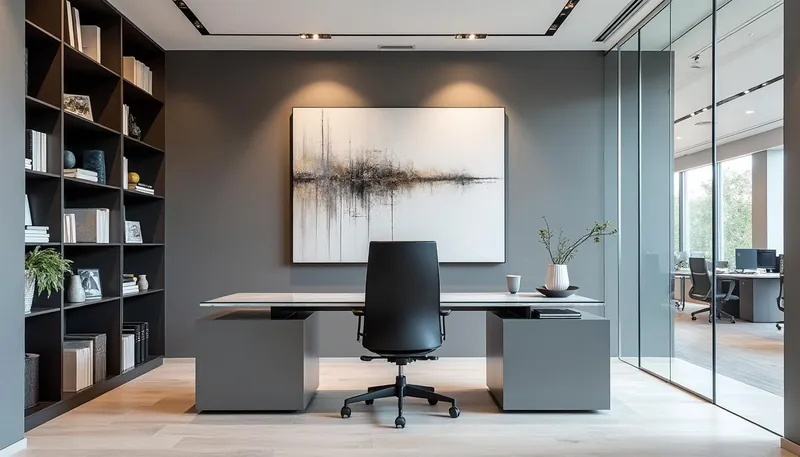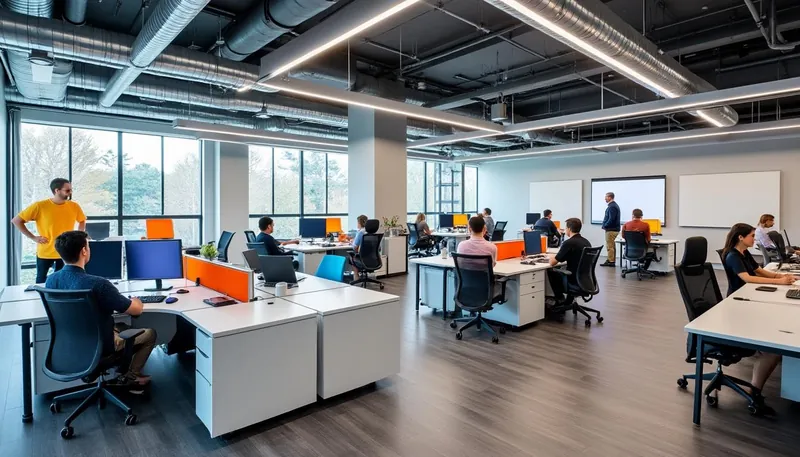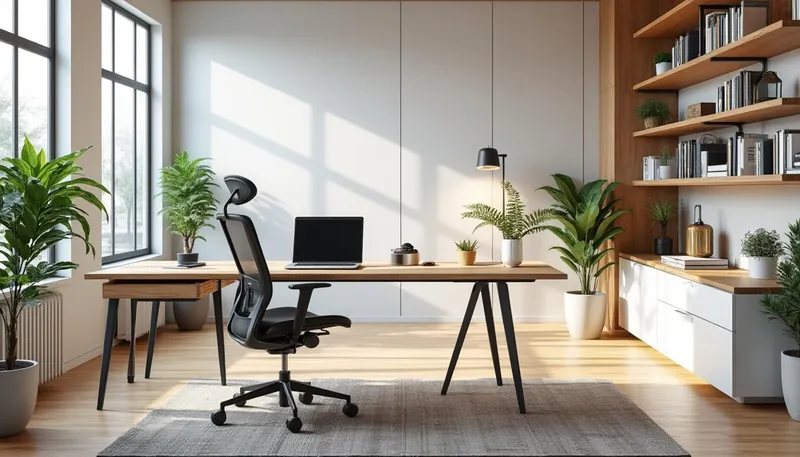Choosing the right office space can significantly shape the culture and productivity of your business. Given the evolving dynamics of workplaces, one key decision that business owners face in 2025 is whether to opt for open-plan or private office configurations. Open-plan offices are hailed for fostering collaboration and flexibility, while private offices are recognized for delivering a focused and quiet environment. As we delve into the details surrounding this choice, we’ll explore the advantages and disadvantages of both layouts, along with strategies to balance the needs of your team and your business objectives effectively.
Key Takeaways:
- Private offices offer privacy and reduced distractions. 🔒
- Open spaces encourage collaboration and adaptability. 🤝
- Edge Workspaces provides tailored office solutions. 🏢
The Anatomy of Private Offices: Enhanced Focus and Professionalism
Private offices have emerged as important locations in modern business environments as they offer a controlled space for work where employees can focus without interruptions. These spaces, often considered traditional, have significant advantages that cater to numerous business needs. Let’s dive into the benefits and challenges associated with private offices.

Advantages of Private Offices
One of the pivotal advantages of private offices is their ability to provide enhanced privacy. This is particularly vital for tasks that require concentrated effort or involve sensitive information. For instance, law firms and financial institutions benefit greatly from having spaces where employees can discuss confidential matters without the fear of being overheard.
Additionally, private offices result in fewer distractions. By being separated from the continuous flow of an open-plan environment, employees can focus on their tasks, leading to improved efficiency. The layout minimizes interruptions and, thus fosters a more productive atmosphere.
Moreover, these offices symbolize a sense of professionalism during client meetings. When holding discussions in a dedicated office, clients tend to perceive the organization as structured and credible. This impression can play a pivotal role in successful negotiations.
Example of Company Implementation
Consider a tech startup that transitioned from co-working environments to private offices as it scaled operations. They found that the capacity to host meetings in private settings not only elevated their brand image but also promoted deeper discussions among team members, enhancing creative problem-solving.
Challenges of Private Offices
While private offices present many benefits, they are not free of challenges. One significant downside is the higher cost associated with leasing and outfitting individual spaces. Most often, private offices require more resources—including furniture from brands like Steelcase or Haworth—which can stretch budget constraints, especially for startups.
Additionally, this arrangement may lead to limited collaboration. When employees are isolated in their own offices, the chance for spontaneous interaction diminishes. This can foster an environment comparable to siloing, where teams may grapple with communication barriers and a reduced exchange of ideas.
| Advantages | Challenges |
|---|---|
| Enhanced Privacy 🔒 | Higher Cost 💰 |
| Fewer Distractions 🔕 | Limited Collaboration ❌ |
| Professional Environment 🤝 | Potential Hierarchical Barriers 📉 |
The Allure of Open Offices: Collaboration Meets Flexibility
Conversely, open offices have gained immense popularity, especially in creative industries. By designing workspaces that promote interaction, these layouts reflect modern philosophies of teamwork and connectivity. Let’s dissect the allure of open offices: what makes them appealing, and where do they falter?

Benefits of Open Offices
Open offices are celebrated for their cost-effectiveness. Organizations save substantially on construction and maintenance costs, as they often require fewer materials to establish. Additionally, open spaces facilitate a flexible environment, easily adjustable as team dynamics fluctuate. This adaptability is crucial for companies that anticipate growth or restructure their operations.
Collaboration flows naturally in open environments. The absence of walls fosters rapid idea exchange, with team members readily able to access one another. Such arrangements are especially beneficial in projects that thrive on brainstorming sessions. Employees tend to become more engaged in their work, enhancing creativity and morale.
Examples in Action
For instance, a marketing agency that embraced an open-office setup reported improved synergy, with team members frequently exchanging ideas leading to innovative campaigns. Moreover, open offices often incorporate design elements from renowned brands like Teknion, creating inspiring spaces that resonate with creativity.
Challenges of Open Offices
Nonetheless, open offices aren’t without their drawbacks. One glaring issue is noise levels. The absence of partitions often leads to disruptive soundscapes, which can deter focus, especially for employees engaged in deep work or analysis. This can create a dilemma when it comes to productivity.
Moreover, the lack of privacy in open offices can hinder sensitive discussions. Employees may feel apprehensive about speaking on potentially confidential matters, worrying their conversations could be overheard—a distinct disadvantage for roles involving discretion, such as HR.
| Benefits | Challenges |
|---|---|
| Cost-Effective 💸 | Noise Levels 📢 |
| Flexible Layouts 🛠️ | Lack of Privacy 🚫 |
| Enhanced Collaboration 🤝 | Focus Challenges ❓ |
Finding the Harmony: Hybrid Office Solutions
As we navigate the pros and cons of both private and open offices, many businesses in 2025 are shifting toward hybrid models. This approach allows organizations to blend the advantages of both environments to cater to diverse employee needs. With modern tools, achieving this balance has never been easier.
Advantages of Hybrid Models
Hybrid setups allow businesses to create environments tailored for various activities. Teams that benefit from collaborative brainstorming sessions can occupy open spaces, while those needing concentration can retreat to private areas. This diverse configuration caters to the dynamic nature of work.
Flexibility stands out when using hybrid models. Companies can design spaces with modular furniture from companies like Knoll or HON, allowing quick rearrangements depending on project needs. This way, an organization can efficiently adjust to changes without incurring significant reconfiguration costs.
Case Study Insight
A recruitment agency that deployed a hybrid model witnessed an increase in employee satisfaction rates, with team members appreciating the opportunity to choose where they worked based on the task at hand. They designed project rooms equipped with advanced technology, streamlining task completion while also reserving quieter areas for focused work.
Challenges Within Hybrid Models
Despite their advantages, hybrid models come with challenges that require consideration. Ensuring that all team members know how to use the spaces effectively can be daunting. Proper communication around space availability is crucial; otherwise, confusion may arise about where to work at any given time.
Additionally, continuous investment in technology is essential. Tools like desk booking systems or collaboration software must be monitored and updated to remain effective in promoting fluidity between office environments.
| Advantages of Hybrid Models | Challenges of Hybrid Models |
|---|---|
| Flexibility in Space Design 🔧 | Communication Challenges 📞 |
| Personalized Work Areas 🎯 | Continuous Tech Investment 💻 |
| Increased Employee Satisfaction 🙂 | Potential Misuse of Spaces 🚷 |
Strategizing the Decision: Tailoring Office Space to Your Needs
Ultimately, the choice between open-plan and private offices—whether as standalone options or part of a hybrid solution—depends heavily on your company’s culture and specific operational needs. Engaging employees in this decision not only enhances satisfaction but also leads to more informed choices.
Key Considerations to Address
- Assessing Employee Needs: Conduct surveys and discussions to gather insights. 📊
- Evaluating Space Requirements: Determine how much room you need considering team sizes and types of work. 📏
- Future Scalability: Keep future growth in mind; ensure your setup can adapt as your business evolves. ⏳
What are the main benefits of private offices?
Private offices offer enhanced privacy, reduced distractions, and a professional environment for meetings.
How can open office designs foster creativity?
Open offices encourage collaboration and brainstorming among employees, increasing engagement and idea sharing.
What tools can help in managing a hybrid office?
Desk booking systems, collaboration apps, and space management software can enhance the functionality of hybrid workspaces.


